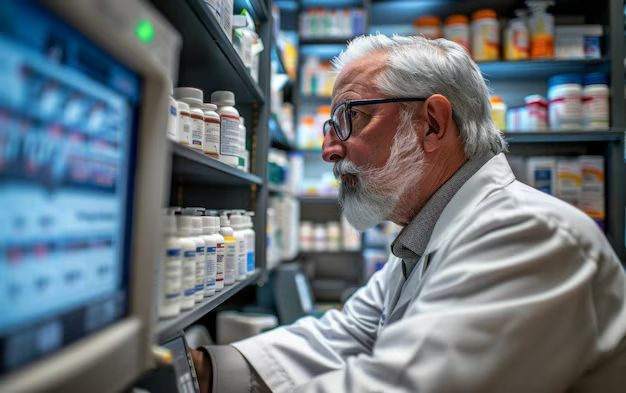How Long Can You Store GLP-1 in the Refrigerator? A Comprehensive Guide on Food Storage & Shelf Life
Imagine opening your refrigerator and finding food or medications that have outstayed their welcome. Sound familiar? If you've ever navigated the complexities of storing medications, particularly biopharmaceuticals like GLP-1 receptor agonists, you might have wondered about their shelf life and storage requirements. In this guide, we delve into every nuance of how long GLP-1 medications last in the refrigerator, offering useful insights into food storage and the shelf life of such compounds.
Understanding GLP-1: What Is It?
What Are GLP-1 Receptor Agonists?
GLP-1, or glucagon-like peptide-1, belongs to a class of drugs designed to mimic naturally occurring hormones that regulate blood sugar levels by enhancing insulin secretion. While not explicitly food, they are often stored alongside food in the fridge to maintain optimal viability, making the understanding of their shelf life crucial.
Why Refrigeration?
These medications, like many biologics, require specific temperature ranges to preserve their activity. Refrigerating GLP-1 helps prevent them from degrading, ensuring they remain effective until their expiration date.
Storing GLP-1 in the Refrigerator: Best Practices
Temperature Range for Storage
For optimal storage, GLP-1 medications generally need to be kept at a temperature of 36°F - 46°F (2°C - 8°C). Refrigeration under this range helps maintain their potency while extending their viable shelf life.
⏰ How Long Do GLP-1 Agonists Last?
Typically, unopened GLP-1 medications remain viable until the expiration date indicated on their packaging if stored correctly in the fridge. Once opened, their stability can decrease, and they are often usable for less time.
Signs of Degradation
Keep an eye out for indicators such as changes in color, texture, or cloudiness in the liquid. If you notice these signs, it's important to consult with a medical provider about whether the medication is still safe to use.
Factors Affecting Shelf Life of GLP-1
🚦 Storage Conditions
- Temperature Fluctuations: Frequent openings and closings of the refrigerator can cause temperature changes, potentially compromising medication stability.
- Light Exposure: Extended exposure to light can degrade these biologics, suggesting that keeping them in an opaque container or the lower section of the fridge may be beneficial.
Packaging and Expiration
Medication packaging provides critical information, including the expiration date, which should guide how long the product is expected to last under proper storage conditions.
Common Related Questions
Can GLP-1 be Stored at Room Temperature?
Some forms of GLP-1 may tolerate brief periods at room temperature, usually due to the inclusion of stabilizers in their formulas. However, it's generally advised to check specific product guidelines because extended exposure to increased temperatures is generally not recommended.
How Do I Know If My Refrigerator is the Right Temperature?
Using a thermometer can help ensure that your refrigerator maintains the ideal range. Positioning the thermometer in different sections of your fridge helps find areas that might not meet these conditions.
Tips for Ensuring Proper Storage
- Label Your Medicine: Keep a log with start dates and expiration tracking, especially after opening packaging.
- Utilize Containers: Place medications in dedicated containers to prevent contamination from foods.
- Positioning: Store at the back of the fridge where temperature remains most consistent.
Practical Insights for Consumers
Storing GLP-1 in the fridge might appear straightforward, yet several considerations are vital to maximizing their shelf life and stability. Here’s a quick checklist to help you:
- 🎯 Maintain Temperature Stability: Avoid placing your medicines in areas of the fridge with variable temperatures.
- ⬜ Use Protective Packaging: Store medications in containers to shield them from light and contamination.
- 📅 Keep Track of Dates: Regularly check expiration dates and note when you first open the medicine.
Shelf-Life Extensions and Maximization
While not common, some resources mention practices that might improve a medication's shelf life, such as:
- Using a Dedicated Mini Fridge: A smaller fridge may help save energy and reduce temperature fluctuations, exclusively storing medicinal products like GLP-1.
Additional Insights into Food Storage
Complementary Storage Tips for Other Pharmaceuticals
GLP-1 storage considerations may mirror those of other refrigerated medications. Here are some universal tips:
- Uniform Cooling: Ensure no part of the refrigerator is overly packed, which can hinder air circulation and affect temperature consistency.
- Separate Areas: Dedicate separate areas for medications to prevent findings from food spills.
Conclusion and Final Thoughts
Understanding how to properly store GLP-1 medications is crucial in ensuring they retain their efficacy right through to their expiration date. Proper refrigerator management, like maintaining stable temperatures and checking expiry dates, enhances not just the shelf life of GLP-1s but the functioning of your fridge overall.
By remaining proactive in these practices, consumers can feel confident that their medications continue to offer the therapeutic benefits they rely upon. Armed with this knowledge, you'll navigate both medical and food storage with ease, ensuring you make the most out of your refrigerator.
Key Takeaways Summary:
- 📦 Store at 36°F - 46°F: Keep medications in optimal storage conditions.
- ⚠️ Monitor for Degradation: Signs like cloudiness or color changes indicate potential spoilage.
- 🎯 Consistent Temperature: Avoid temperature fluctuations with fridge management.
- 📅 Track Expiration Dates: Ensure medications are used within their viable timeframe.
Stay informed and vigilant, and your understanding of GLP-1 storage will no longer just be about compliance but a part of a broader approach towards smart and efficient food and pharmaceutical management.
